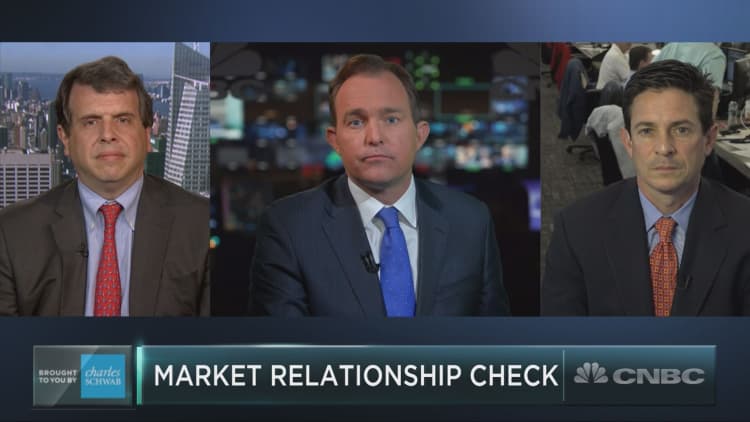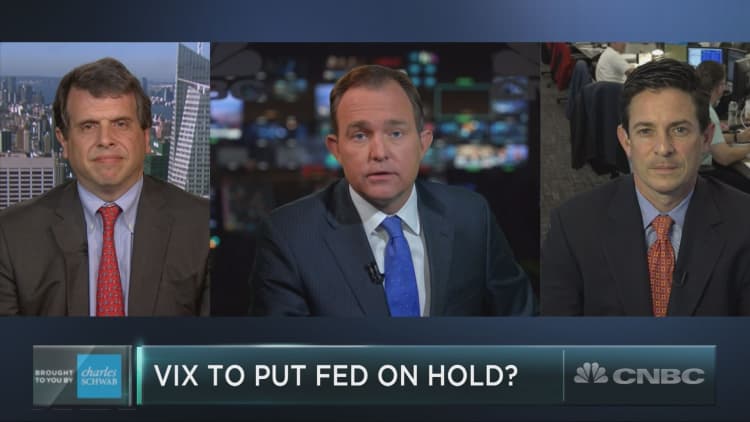


Over the past few months, many market wags have pointed out with varying levels of incredulity that crude oil and the had begun to move in lockstep. Now their steps have become unfastened.
After rising as high as 0.62 in mid-April, the 60-day correlation of the daily moves of the S&P and crude has fallen dramatically over the past month. As of Monday morning, the two assets have only seen a correlation of 0.28 recently. That means that oil and the S&P are closer to being completely indifferent to each other's daily moves than to being perfectly responsive.
To Convergex chief market strategist Nick Colas, this is indicative of a market that has more than just oil on its mind.
"We've seen bigger narratives come into play," Colas said Friday on CNBC's "Trading Nation." "When is the Federal Reserve going to raise interest rates? What's the pace of interest-rate moves for the balance of the year?"
"I still think for the rest of the year we have the election to deal with, that's going to be another major narrative, we're just too early in the cycle," Colas added. "Oil has died down, interest rates have picked up, and I think the next iteration is going to be politics around the elections."
In other words, oil is no longer the most salient factor affecting stocks, both because oil has become less volatile and because stocks have other worries.
While that may make it harder for fund managers and headline writers to concisely explain day-to-day market moves, it is probably good news for investors as a whole.
Those who choose to invest in a broad-market product like the S&P 500 may have no particular predilection for investing in energy. Yet with a correlation above 0.6 between the S&P and oil, every investor is forced to become an energy investor to a certain extent.
Now that the correlation is cooling down, investors who choose to play for oil to rise may find a way to do so, while the rest of the investing masses can focus on factors like the Fed and the presidential election. Not that those should be much easier to predict.






